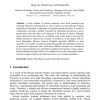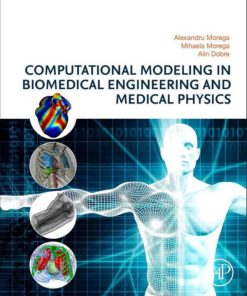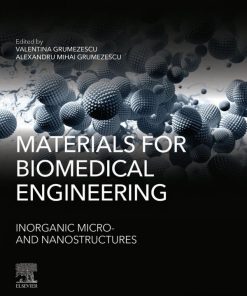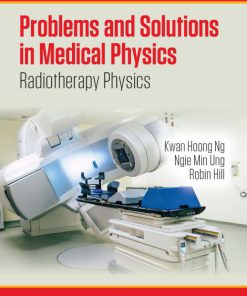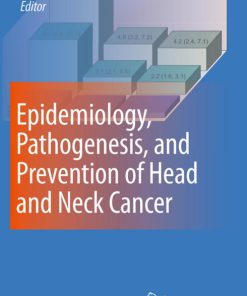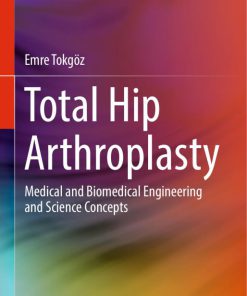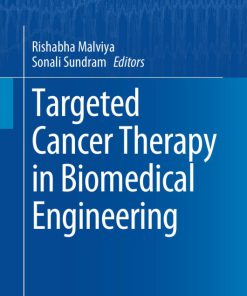(Ebook PDF) Series in Medical Physics and Biomedical Engineering Ser Radiotherapy and Clinical Radiobiology of Head and Neck Cancer 1st edition by Loredana Marcu, Iuliana Toma Dasu, Alexandru Dasu, Claes Mercke 1351001981 9781351001984 full chapters
$50.00 Original price was: $50.00.$25.00Current price is: $25.00.
Authors:Marcu, Loredana G.(Author) , Series:Biomedical [70] , Author sort:Marcu, Loredana G.(Author) , Languages:Languages:eng , Published:Published:Apr 2018 , Publisher:CRC Press
Series in Medical Physics and Biomedical Engineering Ser. : Radiotherapy and Clinical Radiobiology of Head and Neck Cancer 1st edition by Loredana G Marcu, Iuliana Toma-Dasu, Alexandru Dasu, Claes Mercke – Ebook PDF Instant Download/DeliveryISBN: 1351001981, 9781351001984
Full download Series in Medical Physics and Biomedical Engineering Ser. : Radiotherapy and Clinical Radiobiology of Head and Neck Cancer 1st edition after payment.
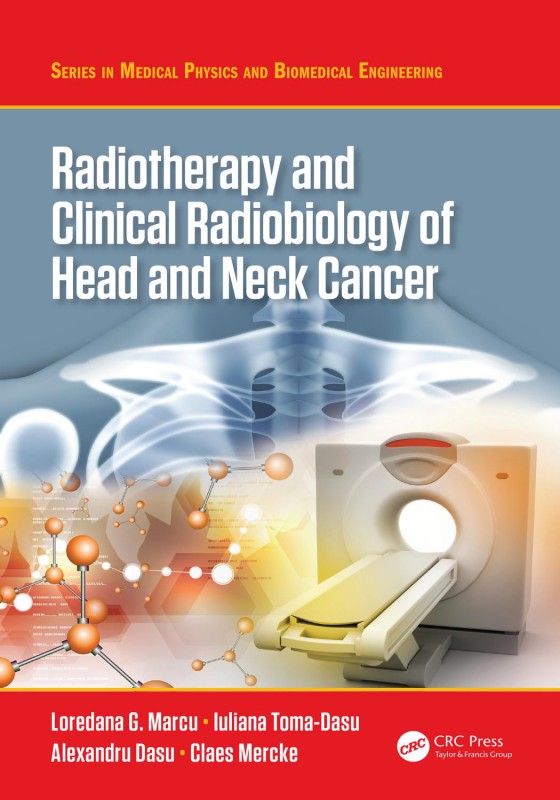
Product details:
ISBN-10 : 1351001981
ISBN-13 : 9781351001984
Author : Loredana G Marcu, Iuliana Toma-Dasu, Alexandru Dasu, Claes Mercke
Common factors that lead to treatment failure in head and neck cancer are the lack of tumour oxygenation, the accelerated division of cancer cells during treatment, and radioresistance. These tumour-related challenges and possible ways to overcome them are covered in this book, authored by three medical physicists and a clinical oncologist who explain how different radiobiological findings have led to the development of various treatment techniques for head and neck cancer. Novel treatment techniques as supported by current scientific evidence are comprehensively explored, as well as the major challenges that arise in the retreatment of patients who have already undergone a form of radiotherapy for primary head and neck cancer. Features: Uses an interdisciplinary approach, encompassing clinical aspects of radiotherapy, radiation biology, and medical physics Applies content by relating all radiobiological characteristics to their respective clinical implications Explains the radiobiological rationale for all previous and current clinical trials for head and neck cancer
Series in Medical Physics and Biomedical Engineering Ser. : Radiotherapy and Clinical Radiobiology of Head and Neck Cancer 1st Table of contents:
Chapter 1 Introductory Aspects of Head and Neck Cancers
1.1 Historic Aspects
1.2 Head and Neck Cancer Anatomy
1.3 Anatomic Landmarks of Some Sites and Subsites Commonly Affected By Malignant Head and Neck Tumours
1.4 Incidence of Head and Neck Cancer
1.5 Risk Factors and Pathogenesis of Head and Neck Cancer
1.5.1 Tobacco and Alcohol Consumption
1.5.2 The Human Papillomavirus
1.5.3 Other Risk Factors
1.6 Pathology and Pathogenesis
Chapter 2 Clinical Aspects of Head and Neck Cancer
2.1 Introduction
2.2 Short Historical Perspective of Head and Neck Cancer Treatment
2.3 Overview of Tumour Site-Related Treatment Techniques for the Management of Head and Neck Cancer
2.3.1 Oral Cancers
2.3.2 Salivary Gland Cancer
2.3.3 Cancer of Nasal Cavity and Paranasal Sinuses
2.3.4 Nasopharyngeal Carcinoma
2.3.5 Oropharyngeal Carcinoma
2.3.6 Hypopharyngeal Carcinoma
2.3.7 Laryngeal Carcinoma
2.4 Chemoradiotherapy In Head and Neck Cancer from the Early Days to the Present
2.5 Hopes and Failures in Head and Neck Cancer Radiobiology and Therapy
2.5.1 Tumour Repopulation and Altered Fractionation Schedules
2.5.1.1 The Future of Fractionated Radiotherapy
2.5.2 Therapeutic Ratio and Cisplatin
2.5.2.1 The Future of Cisplatin
2.5.3 Tumour Hypoxia and Tirapazamine
2.5.3.1 The Future of Tirapazamine
2.5.4 Epidermal Growth Factor Receptor and Cetuximab
2.5.4.1 The Future of Cetuximab
2.5.5 Vascular Endothelial Growth Factor and Bevacizumab
2.5.5.1 The Future of Bevacizumab
2.5.6 Normal Tissue Protection and Amifostine/Radioprotectors
2.5.6.1 The Future of Radioprotectors
2.5.7 HPV-Associated Head and Neck Cancer
2.5.7.1 The Future of HPV-Associated HNC Treatment
Chapter 3 General Radiobiology Refresher
3.1 Radiation Quantities and Units
3.2 Radiation Action and Radiation Damage
3.3 Dose Rate Effect, LET and RBE
3.4 The Oxygen Effect
3.5 Proliferation Kinetics and Parameters
3.6 Dose-Response Relationships
Chapter 4 Hypoxia and Angiogenesis
4.1 Tumour Hypoxia
4.2 Methods to Identify Tumour Hypoxia in HNC
4.3 Methods to Overcome Tumour Hypoxia
4.4 Angiogenesis and VEGF
Chapter 5 The Mechanisms Behind Tumour Repopulation
5.1 Introduction
5.2 Cancer Stem Cells
5.2.1 The Concept of Cancer Stem Cell
5.2.2 Cancer Stem Cells in HNC
5.3 The Mechanisms Behind Tumour Repopulation
5.3.1 Cell Recruitment
5.3.2 Accelerated Stem Cell Division
5.3.3 Loss of Asymmetrical Division of Cancer Stem Cells
5.4 Clinical Implications
5.4.1 Predictive Assays and Detection Methods
5.4.2 Altered Fractionation Schedules
5.5 Cancer Stem Cell-Targeting Mechanisms
5.5.1 Signalling Pathways
5.5.2 The Stem Cell Niche
5.5.3 Cancer Stem Cell Differentiating Agents
5.5.4 Other CSC Targets
Chapter 6 The Radiobiology and Radiotherapy of HPV-Associated Head and Neck Squamous Cell Carcinoma
6.1 HPV+ HNC as a New Tumour Type
6.2 Testing for High-Risk HPV Patients
6.3 Radiobiological Differences between HPV− and HPV+ HNC
6.3.1 Repair of Sublethal Injury in Normal and Neoplastic Cells
6.3.2 Reoxygenation of the Tumour
6.3.2.1 Hypoxia
6.3.2.2 Angiogenesis
6.3.3 Redistribution through the Division Cycle
6.3.4 Regeneration of Surviving Normal and Malignant Cells between Dose Fractions
6.3.5 Radiosensitivity
6.3.5.1 Intrinsic Radiosensitivity
6.3.5.2 Experimental Determination of Radiosensitivity by Clonogenic Assays
6.3.5.3 Radiosensitivity and Smoking
6.3.6 Radiobiological Effects of Combined Radio-Chemotherapy on HPV+ HNSCC
6.4 Clinical Implications of Differences between HPV– and HPV+ HNSCC
6.4.1 Treatment Approaches
6.4.1.1 The Role of Neoadjuvant Chemotherapy
6.4.1.2 Chemoradiotherapy and Cetuximab
6.4.2 Patient Stratification
6.4.2.1 Smoking History and Risk Stratification
6.4.2.2 Tumour-Infiltrating Lymphocytes and Risk Stratification
6.5 Future Management of HPV+ HNSCC
6.5.1 Conclusions Derived from Clinical (Radio)Biology Regarding the Responsiveness of HPV+ Oropharyngeal Squamous Cell Carcinoma
6.5.2 New Staging System for HPV-Related Oropharyngeal Squamous Cell Carcinoma
6.5.3 Treatment Directions for HPV+ HNSCC
Chapter 7 Normal Tissue Tolerance
7.1 The Radiobiology of Normal Tissues: Early and Late Effects
7.2 Acute Reactions in HNC Treatment
7.3 Late Reactions in HNC Treatment
7.4 Normal Tissue Tolerance Doses in HNC Radiotherapy
7.5 Radioprotectors
Chapter 8 The Treatment of Head and Neck Cancer
8.1 Treatment Selection
8.2 Target Definition for Head and Neck Radiotherapy
8.3 Treatment Techniques
8.3.1 External Beam Radiotherapy
8.3.2 Brachytherapy
8.3.3 Proton and Heavy Ion Therapy
8.3.4 Combined Treatment Modalities
8.4 Treatment Response Monitoring and Adaptation
8.5 Treatment Follow-Up
Chapter 9 Targeted Therapies
9.1 Rationale for Targeted Therapies and Associated Challenges
9.2 Anti-EGFR Targeted Molecular Therapies
9.2.1 Biological Background
9.2.2 Clinical Aspects of Anti-EGFR Therapy
9.3 Anti-Angiogenic Targeted Therapies
9.3.1 Biological Background
9.3.2 Clinical Studies of Anti-Angiogenic Targeted Therapies
9.4 Other Targets and Pathways
9.4.1 Proteasomes Inhibitors
9.4.2 PI3K/AKT/mTOR Pathway Inhibitors
9.4.3 Src Family Kinases
9.4.4 Insulin-Like Growth Factor Receptor, IGF-1R
9.4.5 PD-1 (Programmed Cell Death-1) Receptor
9.5 Conclusions and Future Prospects
Chapter 10 Retreatment Issues
10.1 Causes of Tumour Recurrence
10.2 Appropriateness of Reirradiation
10.3 Outcome with Reirradiation-Locoregional Control and Survival
10.4 Reirradiated Volume
10.5 Reirradiation Dose and Fractionation, Prognostic Factors
10.6 Reirradiation with Drugs
10.7 Normal Tissue Toxicity
People also search for Series in Medical Physics and Biomedical Engineering Ser. : Radiotherapy and Clinical Radiobiology of Head and Neck Cancer 1st:
series medical
service biomedical program
a biomedical service inc
a biomedical
b.s. biomedical engineering



